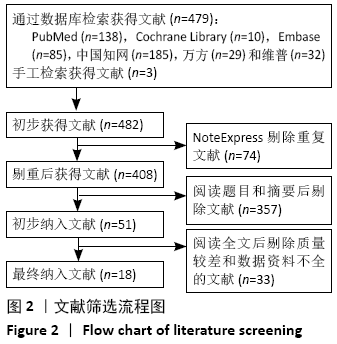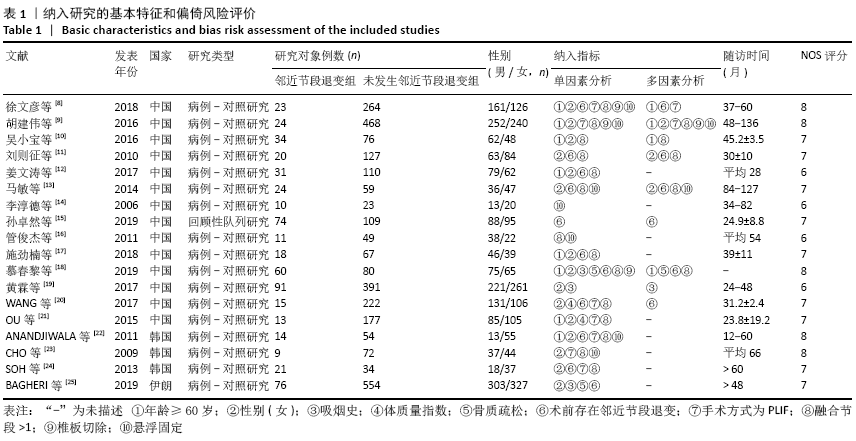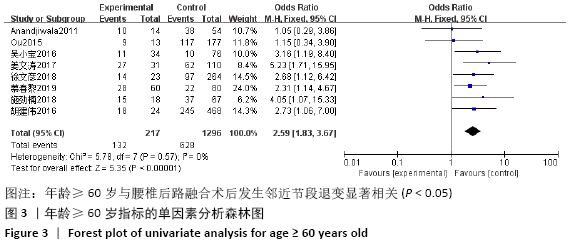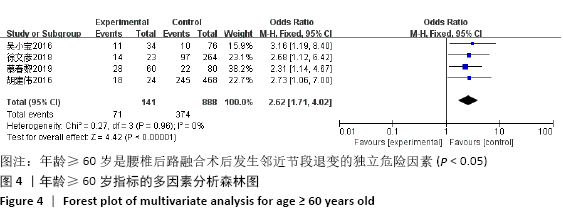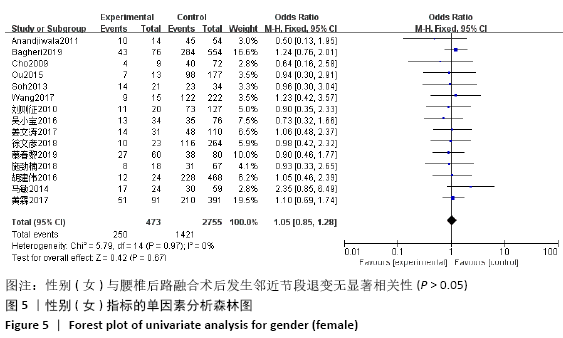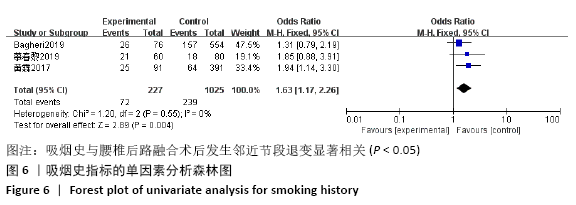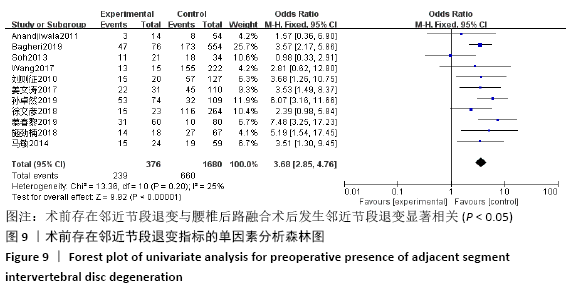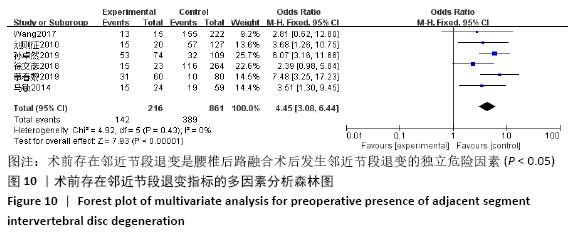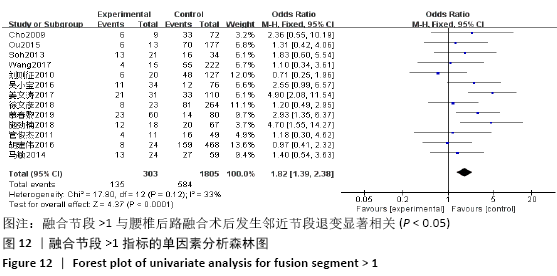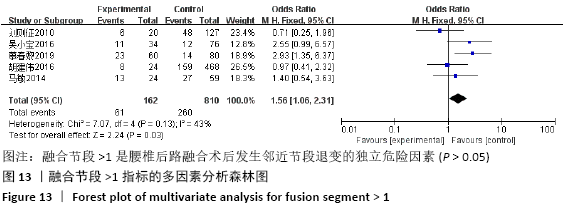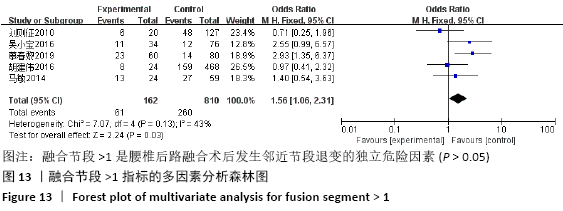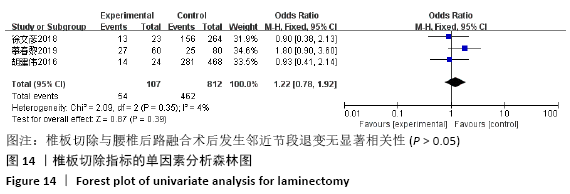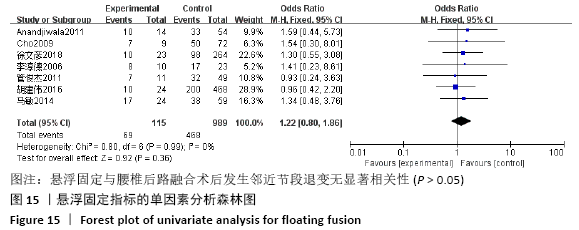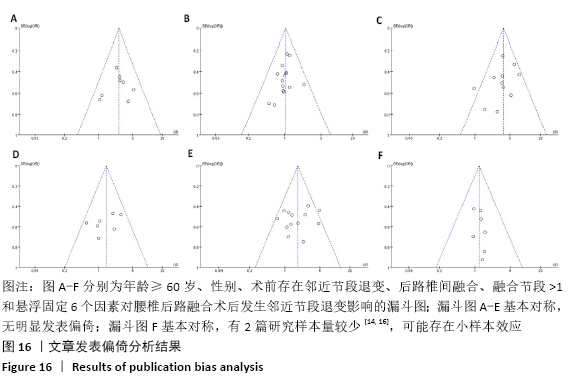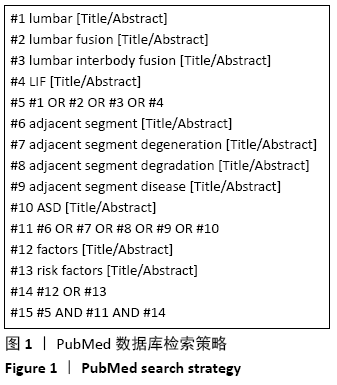[1] MARAGKOS GA, MOTIEI-LANGROUDI R, FILIPPIDIS AS, et al. Factors predictive of adjacent segment disease after lumbar spinal fusion. World Neurosurg. 2020;133:e690-e694.
[2] RAMIREZ-VILLAESCUSA J, LOPEZ-TORRES HJ, MARTIN-BENLLOCH A, et al. Risk factors related to adjacent segment degeneration: retrospective observational cohort study and survivorship analysis of adjacent unfused segments. Br J Neurosurg. 2019;33(1):17-24.
[3] ALENTADO VJ, LUBELSKI D, HEALY AT, et al. Predisposing characteristics of adjacent segment disease after lumbar fusion. Spine (Phila Pa 1976). 2016;41(14):1167-1172.
[4] PFIRRMANN CW, METZDORF A, ZANETTI M, et al. Magnetic resonance classification of lumbar intervertebral disc degeneration. Spine. 2001;26(17):1873-1878.
[5] GHISELLI G, WANG JC, HSU WK, et al. L5-S1 segment survivorship and clinical outcome analysis after L4-L5 isolated fusion. Spine. 2003;28(12):1275-1280.
[6] WELLS GA. The Newcastle-Ottawa Scale (NOS) for assessing the quality of nonrandomised studies in meta-analyses[C]. 2000.
[7] 何俐.Cochrane系统评价软件RevMan简介[J].中国循证医学,2001,1(3):168-169.
[8] 徐文彦.腰椎融合术后发生邻近节段退变的相关因素分析[J].颈腰痛杂志, 2018,39(6): 741-744.
[9] 胡建伟,尹承慧,张帅.腰椎后路融合术后邻近节段退变疾病再手术的危险因素分析[J].中国骨与关节损伤杂志,2016,31(7):712-714.
[10] 吴小宝,龚进红.腰椎内固定融合术后邻近节段退变的影响因素研究[J].实用骨科杂志, 2016,22(8):723-725.
[11] 刘则征,张忠民,金大地.腰椎融合内固定术后邻近节段退变的影响因素[J].南方医科大学学报,2010,30(5):1134-1137.
[12] 姜文涛,梅伟,王庆德,等.腰椎融合术后邻近节段退变的影响因素分析[J].中医正骨, 2017,29(3):3-5.
[13] 马敏,吴德升,黄宇峰,等.腰椎融合术后邻近节段退变的长期随访观察[J].同济大学学报(医学版),2014,35(5):51-55.
[14] 李淳德,于峥嵘,刘宪义,等.腰椎内固定融合术后邻近节段退变的影响因素[J].中华外科杂志,2006,44(4):246-248.
[15] 孙卓然,李危石,郭扬,等.腰椎融合术前相邻节段存在退变因素对术后早期临床疗效的影响[J].中国修复重建外科杂志,2019, 33(7):837-844.
[16] 管俊杰,石志才.后路腰椎椎间融合术对邻近节段退变的影响[J].脊柱外科杂志, 2011, 9(2):83-87.
[17] 施劲楠.腰椎融合内固定术后退行性病变的发生情况及影响因素分析[J].医学理论与实践,2018,31(16):2437-2438.
[18] 慕春黎,王朋.PLIF术后邻近节段退变的危险因素分析[J].中国骨与关节损伤杂志, 2019,34(1):87-89.
[19] 黄霖,蔡兆鹏,陈铿,等.腰椎椎间融合术后邻近节段退变的术前相关因素回顾性分析[J].骨科临床与研究杂志,2017,2(1):1-5.
[20] WANG H, MA L, YANG D, et al. Incidence and risk factors of adjacent segment disease following posterior decompression and instrumented fusion for degenerative lumbar disorders. Medicine. 2017;96(5):e6032.
[21] OU CY, LEE TC, LEE TH, et al. Impact of body mass index on adjacent segment disease after lumbar fusion for degenerative spine disease. Neurosurgery. 2015;76(4):396-402.
[22] ANANDJIWALA J, SEO J, HA K, et al. Adjacent segment degeneration after instrumented posterolateral lumbar fusion: a prospective cohort study with a minimum five-year follow-up. Eur Spine J. 2011;20(11):1951-1960.
[23] CHO K, KANG S, YOO D, et al. Risk factors and surgical treatment for symptomatic adjacent segment degeneration after lumbar spine fusion. J Korean Neurosurg Soc. 2009;46(5):425.
[24] SOH J, LEE JC, SHIN BJ. Analysis of risk factors for adjacent segment degeneration occurring more than 5 years after fusion with pedicle screw fixation for degenerative lumbar Spine. Asian Spine J. 2013;7(4):273.
[25] BAGHERI SR, ALIMOHAMMADI E, ZAMANI FROUSHANI A, et al. Adjacent segment disease after posterior lumbar instrumentation surgery for degenerative disease: incidence and risk factors. J Orthop Surg. 2019;27(2):920543725.
[26] XIA XP, CHEN HL, CHENG HB. Prevalence of adjacent segment degeneration after spine surgery: a systematic review and meta-analysis. Spine (Phila Pa 1976). 2013;38(7):597-608.
[27] ZHONG ZM, DEVIREN V, TAY B, et al. Adjacent segment disease after instrumented fusion for adult lumbar spondylolisthesis: incidence and risk factors. Clin Neurol Neurosurg. 2017; 156:29-34.
[28] SEARS WR, SERGIDES IG, KAZEMI N, et al. Incidence and prevalence of surgery at segments adjacent to a previous posterior lumbar arthrodesis. Spine J. 2011;11(1):11-20.
[29] LEE JC, KIM Y, SOH J, et al. Risk factors of adjacent segment disease requiring surgery after lumbar spinal fusion. Spine. 2014;39(5): E339-E345.
[30] OMAIR A, MANNION AF, HOLDEN M, et al. Age and pro-inflammatory gene polymorphisms influence adjacent segment disc degeneration more than fusion does in patients treated for chronic low back pain. Eur Spine J. 2016; 25(1):2-13.
[31] HERMANN PC, WEBLER M, BORNEMANN R, et al. Influence of smoking on spinal fusion after spondylodesis surgery: a comparative clinical study. Tech Health Care. 2016;24(5):737-744.
[32] PARK JS, SHIM KD, SONG YS, et al. Risk factor analysis of adjacent segment disease requiring surgery after short lumbar fusion: the influence of rheumatoid arthritis. Spine J. 2018;18(9):1578-1583.
[33] LIANG J, DONG Y, ZHAO H. Risk factors for predicting symptomatic adjacent segment degeneration requiring surgery in patients after posterior lumbar fusion. J Orthop Surg Res. 2014;9(1):97.
[34] KIM JY, RYU DS, PAIK HK, et al. Paraspinal muscle, facet joint, and disc problems: risk factors for adjacent segment degeneration after lumbar fusion. Spine J. 2016;16(7):867-875.
[35] YUGUÉ I, OKADA S, MASUDA M, et al. Risk factors for adjacent segment pathology requiring additional surgery after single-level spinal fusion: impact of pre-existing spinal stenosis demonstrated by preoperative myelography. Eur Spine J. 2016;25(5):1542-1549.
[36] LEE CS, HWANG CJ, LEE S, et al. Risk factors for adjacent segment disease after lumbar fusion. Eur Spine J. 2009;18(11):1637-1643.
[37] ZHONG Z, DEVIREN V, TAY B, et al. Adjacent segment disease after instrumented fusion for adult lumbar spondylolisthesis: incidence and risk factors. Clin Neurol Neurosurg. 2017; 156:29-34.
[38] NAGATA H, SCHENDEL M J, TRANSFELDT EE, et al. The effects of immobilization of long segments of the spine on the adjacent and distal facet force and lumbosacral motion. Spine (Phila Pa 1976). 1993;18(16):2471-2479.
[39] TOBERT DG, ANTOCI V, PATEL SP, et al. Adjacent segment disease in the cervical and lumbar spine. Clin Spine Surg. 2017;30(3):94-101.
[40] 李冬月,海涌,孟祥龙,等.短节段腰椎固定融合术治疗退变性腰椎侧凸的并发症及危险因素分析[J].中国脊柱脊髓杂志, 2019, 29(10):882-887.
[41] MATSUOKA Y, ENDO K, SUZUKI H, et al. Postoperative radiographic early-onset adjacent segment degeneration after single-level L4–L5 posterior lumbar interbody fusion in patients without preoperative severe sagittal spinal imbalance. Asian Spine J. 2018;12(4):743-748.
[42] ZHENG G, WANG C, WANG T, et al. Relationship between postoperative lordosis distribution index and adjacent segment disease following L4-S1 posterior lumbar interbody fusion. J Orthop Surg Res. 2020;15(1):129.
[43] BERG S, TROPP HT, LEIVSETH G. Disc height and motion patterns in the lumbar spine in patients operated with total disc replacement or fusion for discogenic back pain. Results from a randomized controlled trial. Spine J. 2011;11(11):991-998.
[44] 刘啸,杨晓松,于淼,等.腰椎融合术后相邻节段旋转角度、椎间活动度及椎间隙高度变化的临床分析[J].中国脊柱脊髓杂志, 2019,29(2):109-115.
[45] 郝俊龙,陈永刚,夏亚一,等.腰椎融合术后发生邻近节段椎间盘退变的系统评价[J].中国矫形外科杂志,2011,19(5):361-364.
[46] ZHANG C, BERVEN SH, FORTIN M, et al. Adjacent segment degeneration versus disease after lumbar spine fusion for degenerative pathology: a systematic review with meta-analysis of the literature. Clin Spine Surg. 2016;29(1):21-29.
|
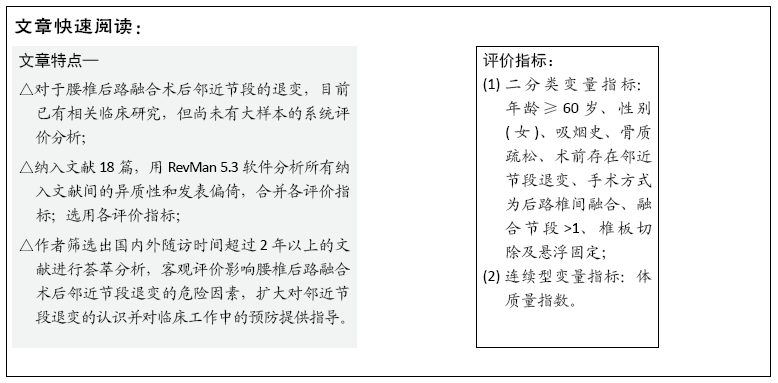 文题释义:
文题释义: